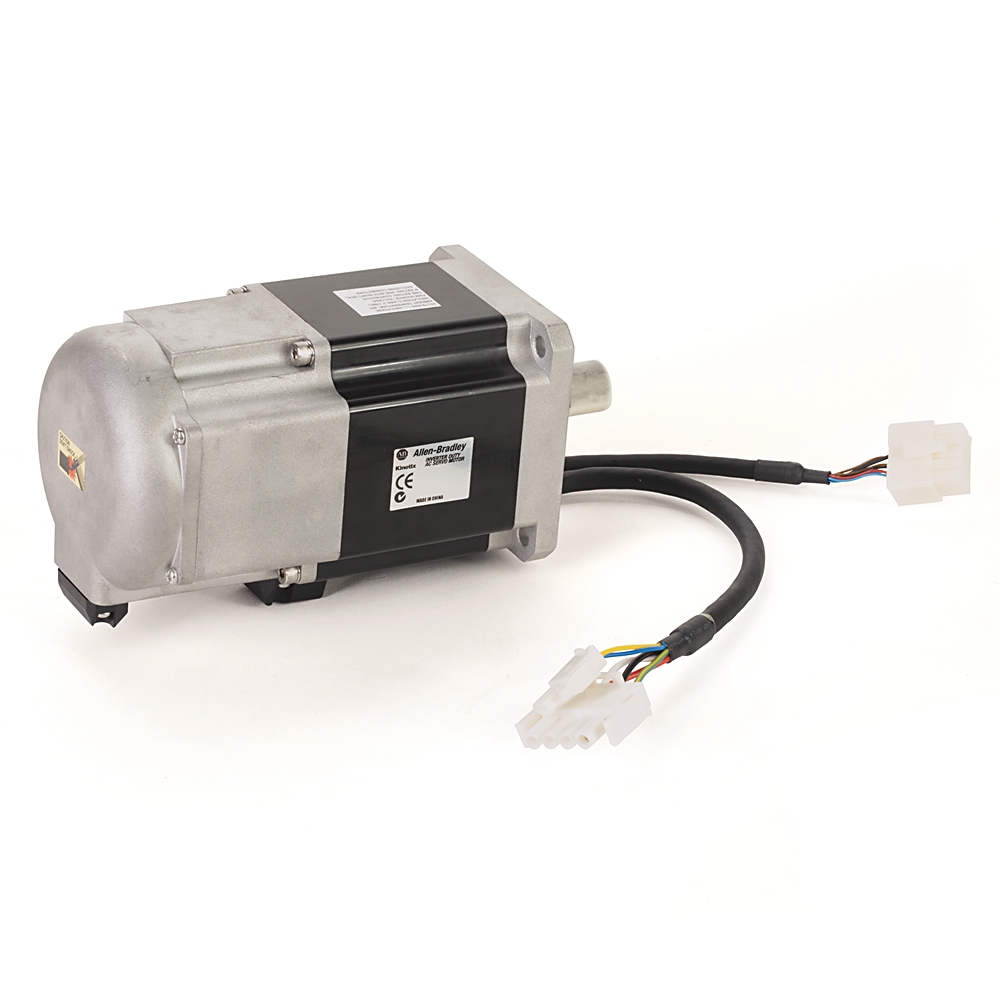
What is a Servo Motor?
Servo motors are compact, high-performance actuators critical to modern automation systems. From toys and printers to CNC machines and aircraft systems, servo motors are widely used to control angular or linear positions, velocity, and acceleration with unmatched precision.
A servo motor is a type of rotary or linear actuator that uses closed-loop feedback to maintain precise control over motion. Built with internal control circuitry and geared for high torque in small packages, servo motors are engineered for applications requiring tight control of position and speed.
Mechanism of a Servo Motor
Servo motors operate within a closed-loop control system. A command signal digital or analog is compared with feedback from the motor’s shaft often via a potentiometer or encoder. Any deviation from the desired position creates an error signal, which the internal controller uses to adjust motor output accordingly. This loop allows the motor to maintain consistent performance, even in the presence of external interference or load changes.
Working Principle
Inside every servo motor, you’ll typically find:
-
A potentiometer for position sensing
-
A gear assembly to increase torque and reduce speed
-
A control circuit to generate output based on feedback
When a signal is received, the motor rotates. The potentiometer simultaneously changes resistance, updating the controller on the shaft’s current angle. Once the target position is achieved (error = 0), the motor stops. This self-regulating mechanism enables precise positioning.
Example Model:
Allen Bradley Servo Motor TL-A2540P-HJ32AN
Servo Motor Control with Microcontrollers
Modern servo motors are easily integrated with microcontrollers using three primary wires:
-
Ground (GND) – typically brown or black
-
Power (Vcc) – red
-
PWM Signal (Control) – orange or yellow
Servo motors operate on Pulse Width Modulation (PWM). The duty cycle of the signal determines the angular position of the motor shaft. For instance, a 1 ms pulse may position the motor at 0°, a 2 ms pulse at 180°, with intermediate pulses setting angles in between.
Types of Servo Motors
DC Servo Motors
DC servo motors use separate power sources for the armature and field windings. They are known for:
-
High efficiency
-
Simple control
-
Brushless designs (in modern versions)
Subtypes:
-
Series Motors – high starting torque, low efficiency
-
Split-Series Motors – better torque curve and damping
-
Shunt Motors – separate field and armature windings
-
Permanent Magnet Motors – compact, efficient, widely used in consumer products
AC Servo Motors
These motors use encoders for feedback and are often found in high-precision applications:
-
Positional Rotation – moves within a fixed range (e.g., 0–180°)
-
Continuous Rotation – rotates without angle limit
-
Linear Servo Motors – provide back-and-forth motion
AC vs. DC Servo Motor Comparison
| Feature | AC Servo Motor | DC Servo Motor |
|---|---|---|
| Speed Control | Based on frequency | Based on voltage |
| Efficiency | Moderate | High |
| Precision | High | Moderate |
| Noise | Low | High |
| Maintenance | Low (no brushes) | High (brushes wear out) |
| Control Complexity | High | Low |
Efficiency of Servo Motors
Servo motors are up to 85% efficient due to:
-
High-quality permanent magnets
-
Dense wire winding and lamination
-
Optimized torque-to-size ratio
These design factors allow servo motors to produce more torque while consuming less energy ideal for both industrial automation and battery-operated devices.
Advantages of Servo Motors
-
Precision control of position, speed, and torque
-
Quiet operation with minimal vibration
-
Compact size with high power density
-
Feedback-driven error correction
-
High acceleration and dynamic response
-
Suitable for integration with CNC, robotics, and aerospace systems
Disadvantages
-
Higher cost than stepper motors
-
Potential lag in ultra-high-precision tasks
-
Some vibration when stationary in cheaper models
Applications of Servo Motors
Servo motors are vital in systems that require accurate positioning and rapid speed changes without overheating. Common applications include:
-
Industrial Automation – CNC, packaging, assembly
-
Robotics – precise joint movement and rotation
-
Aerospace – control surfaces and hydraulic fluid regulation
-
Consumer Electronics – DVD players, remote-controlled toys
-
Automotive – cruise control systems, AC actuators
-
Solar Tracking Systems – maintaining optimal panel orientation
-
Automatic Doors – supermarket and commercial entry systems
Internal Circuitry Overview
Servo circuits consist of:
-
Power Input
-
Ground
-
PWM Signal Input
The control circuit interprets the PWM pulse width to adjust the motor’s direction and rotation angle, while a potentiometer feeds back the current position.
How to Choose the Right Servo Motor
Key specs to consider:
-
Continuous Torque: Average torque sustained over time
-
Peak Torque: Max torque required for brief moments
-
Speed (RPM): Application-specific rotational speed
-
Gear Ratio: Torque/speed tradeoff through gear combinations
-
Inertia Ratio: Load-to-motor inertia matching
-
Environmental Conditions: Temperature, humidity, vibration
-
Efficiency Rating: Often found on datasheets
Conclusion
Servo motors remain a cornerstone of modern automation. Their precision, responsiveness, and compact form make them ideal for thousands of applications from intricate robotic arms to massive industrial systems.
For help selecting the right Allen Bradley or other brand servo motors for your application, reach out to us at:
PLG Automation
📧 Email: sales@plgautomation.com
📞 Phone: 800-906-9271
